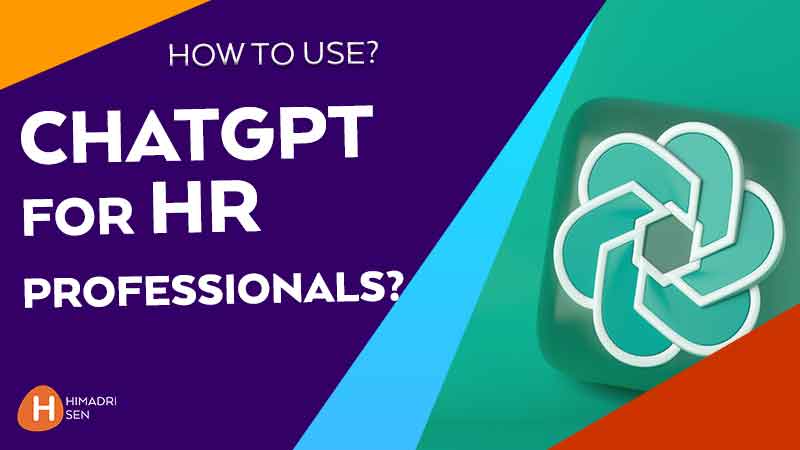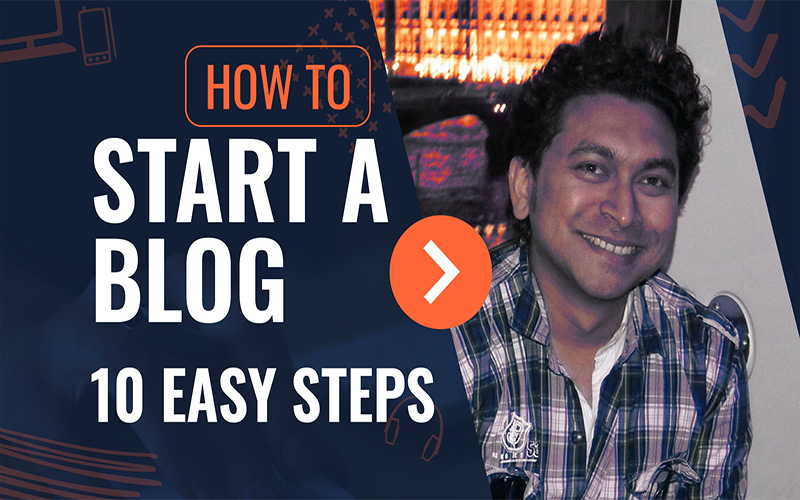Today I will introduce you to ChatGPT as a tool that you can use on a daily basis as an HR professional. ChatGPT has gained popularity as a tool for automating many HR functions, thanks to developments in artificial intelligence and natural language processing.

You will discover the advantages of using ChatGPT for HR professionals in this post, including time savings, cost effectiveness, accuracy, scalability, and customization. Also, you will receive instructions on how to utilize ChatGPT efficiently for a variety of HR functions, including hiring, onboarding, training, and development, employee surveys, performance evaluations, and exit interviews.
Additionally, I will highlight the best practices for using ChatGPT to guarantee its optimum performance, including knowing its limitations, educating it on your company’s particular requirements, offering feedback and corrections to improve accuracy, regularly monitoring its performance, and ensuring data privacy and security.
This article’s main objective is to inspire you to consider ChatGPT in your daily tasks and to arm you with the information and abilities needed to do so.
Benefits of using ChatGPT in HR work
You can gain from ChatGPT in a number of ways as an HR professional. Let’s look more closely at the benefits of utilising ChatGPT for HR tasks:
A. Time-saving:
By automating time-consuming procedures like resume screening, initial interviews, and responding to employee inquiries, ChatGPT can help you save a lot of time. You can free up your time to concentrate on more significant HR efforts by automating these activities.
B. Cost-effective:
Because ChatGPT eliminates the need for additional people to conduct routine duties, it can be a cost-effective alternative for HR tasks. Your company may save a lot of money as a result of this.
C. Accuracy:
To correctly understand and reply to employee inquiries, ChatGPT employs natural language processing. This can lower the possibility of human error and guarantee that your HR duties are completed precisely and done quickly.
D. Scalability:
ChatGPT can be the perfect choice for businesses with a large number of employees because it can scale quickly to manage a significant volume of HR duties. ChatGPT is capable of handling a small number of requests or thousands.
E. Customization:
ChatGPT can be trained to understand the particular requirements of your company. The chatbot’s language, tone, and responses can be altered to fit your brand and company culture. Your employees’ experience will be more tailored as a result, which will increase engagement and happiness.
In general, ChatGPT can greatly increase the effectiveness and efficiency of your HR tasks. You can save time, cut expenses, increase accuracy, scale it quickly, and have it tailored to your particular requirements. You may put more of your attention on strategic objectives and enhance the employee experience by integrating ChatGPT into your HR processes.
How to Use ChatGPT for HR Professionals
You can use ChatGPT as an HR professional during different phases of the hiring process. These are a few instances of how ChatGPT has been put to use:
A. Hiring Process
1. Search Candidate:
ChatGPT can help in candidate search with boolean search strings from job portals like LinkedIn by understanding the search criteria and offering accurate results depending on the supplied parameters. Recruiters can more quickly and effectively find qualified candidates because of its ability to spit out complex search strings and which you can apply to job portals search engines.
Example Prompt:
2. Job Description:
With the use of pertinent keywords like job title, experience, and industry language, ChatGPT may help to create precise job descriptions. To encourage diversity and inclusion, it can offer suitable phrases and check the description for any bias. This may lead to more successful job postings that appeal to and draw in qualified candidates.
Example Prompt:
3. Job Posting:
You can build a clear and straightforward job posting with the help of ChatGPT. The chatbot may create a job posting that is optimised for search engines and draws in the relevant candidates using the job description and specifications that you provide..
Example prompt:
4. Resume Screening:
ChatGPT can help with resume screening by examining resumes and selecting the best applicants based on particular standards like projects and experience. You can programme the chatbot to review resumes in accordance with the hiring standards of your company.
Example prompt:
5. Candidate Outreach:
ChatGPT can help with candidate outreach by setting up interviews and sending customized emails to possible applicants. ChatGPT can find the top prospects and start outreach by looking into candidate profiles and job criteria. By doing so, HR managers can spend less time on administrative tasks and improve applicant engagement.
Example Prompt:
6. HR-Interview Q&A:
To determine a candidate’s fit for the position, you can use ChatGPT to ask them questions prior to the interview. These queries offer information on the candidate’s credentials and experience and can be tailored to the particular job needs.
Example prompt:
7. Interview Questions:
ChatGPT can provide interview questions to hiring managers based on the job requirements and the candidate’s resume. These questions can be tailored to assess the candidate’s skills, experience, and fit with the company culture.
Example prompt:
8. Feedback Email:
After an interview, ChatGPT can help generate feedback emails for candidates by reviewing the interview notes and offering ideas for individualized and helpful criticism. In order to guarantee that the feedback is beneficial and professional and contributes to a great candidate experience, it might also suggest proper language and tone.
Example prompt:
B. Employee Engagement
As an HR professional, you can use ChatGPT in a number of ways to raise employee engagement and improve the overall working environment.
1. Onboarding:
By training new hires on company policies, practices, and culture, you can use ChatGPT to make the onboarding process simple.
You can ask ChatGPT, for instance, to provide a new hire a step-by-step onboarding checklist and respond to any queries they may have regarding business policies and procedures.
Example prompt:
2. Training and Development:
With help of ChatGPT, you can offer your staff members training and development materials including webinars, online classes, and tutorials. You can instruct ChatGPT to create content related to these and offer staff members various training programmes and keep tabs on their development.
3. Employee Surveys:
Employee surveys and feedback on numerous HR activities, such as employee engagement, satisfaction, and retention, can be collected using ChatGPT. You can ask ChatGPT to survey employees to learn more about their satisfaction and engagement levels.
4. Performance Appraisals:
Setting goals for employees and conducting performance reviews are both possible with ChatGPT. Employees can enhance their performance by using ChatGPT to give them coaching and feedback. You can ask ChatGPT to give staff a performance evaluation form and give them comments on how they did.
5. Exit Interviews:
With the help of ChatGPT, you can ask departing employees about their experiences working for the company in exit interviews. Also, ChatGPT can shed light on areas that require development in order to increase employee retention. You can ask ChatGPT to interview a departing worker to get their thoughts on their time spent working for the company.
By leveraging ChatGPT in these areas, you can enhance your HR processes and create a more engaged and satisfied workforce.
Best Practices for Using ChatGPT
A powerful tool like ChatGPT can help HR professionals in streamlining their processes and raising employee engagement. But, it’s crucial to follow a few best practises to get the most out of ChatGPT:
1. Be aware of ChatGPT’s Limitations:
Although ChatGPT is a very sophisticated tool, it’s necessary to be aware of its limitations. When ChatGPT has access to a lot of reliable data, it performs best. Also, it’s crucial to remember that ChatGPT is an AI tool that may not always deliver accurate answers.
2. Train ChatGPT to your company specific needs:
If you are using the ChatGPT API integrated in your HRMS. It’s essential to train ChatGPT on the unique requirements of your business in order to guarantee that it produces correct and pertinent responses. This can be achieved by giving pertinent data and information regarding the policies, practices, and culture of your business.
3. Provide feedback to improve accuracy:
While being Integrated with your HRMS ChatGPT (API) is always learning and getting better. It can become more accurate over time with your assistance in providing feedback and corrections. If you see that ChatGPT is responding incorrectly, fix it and give it feedback so that it can improve.
4. Monitor ChatGPT’s performance overtime:
To make sure ChatGPT is giving correct and pertinent answers, it’s crucial to regularly check its performance. Take action to fix any problems or errors you see so that ChatGPT can respond more accurately in the future.
5. Ensure data privacy and security:
To learn and enhance its responses, ChatGPT makes use of data that you provide. It’s essential to ensure that ChatGPT has access to safe data that respects your privacy. Take precautions to safeguard sensitive information and guarantee that only authorised individuals have access to it.
By adhering to these best practices, you can ensure that ChatGPT becomes a useful tool, offering precise responses that can help your HR processes run more smoothly and improve your employee engagement.
6. Future Prospects for HR Professionals with ChatGPT
For HR experts, ChatGPT is a fascinating tool with a lot of potential. ChatGPT has the potential to become even more precise and effective with advances in AI technology, making it a crucial tool for HR managers. Here are some probable ChatGPT future developments:
7. Enhanced Natural Language Processing:
ChatGPT might get increasingly better at comprehending and responding to human language as natural language processing technology develops, making it a more beneficial tool for HR managers.
8. Improved Accuracy:
ChatGPT’s answers will get even more precise as it gathers more data. As a result, HR professionals will be able to rely on ChatGPT for crucial HR duties even more.
9. Increased Customization:
ChatGPT can be trained on particular data sets to produce more individualised responses. ChatGPT might get even better at recognising the subtleties of a given company’s culture and HR procedures as technology develops.
Encouragement for HR Experts to try ChatGPT AI
ChatGPT is unquestionably worthwhile to try if you’re an HR professional aiming to simplify your procedures and raise employee engagement. Despite the technology’s drawbacks, ChatGPT can speed up processes, lower expenses, and boost accuracy. Here are some justifications for trying ChatGPT::
1. Improved Efficiency:
HR specialists can concentrate on more high-value work by streamlining HR processes with ChatGPT’s assistance.
2. Reduced Costs:
ChatGPT can lower the price of hiring and training HR staff.
3. Enhanced Employee Engagement:
ChatGPT may increase employee engagement and satisfaction by promptly and accurately responding to queries and issues raised by staff members.
Wrapping Up:
For HR professionals, ChatGPT offers a ton of potential, thus using it for HR duties is definitely worthwhile. HR professionals may improve accuracy, streamline their procedures, and increase employee engagement by utilising ChatGPT. The future potential of ChatGPT is tremendously exciting as technology develops, and it is likely to become an essential tool for HR professionals in the years to come.




